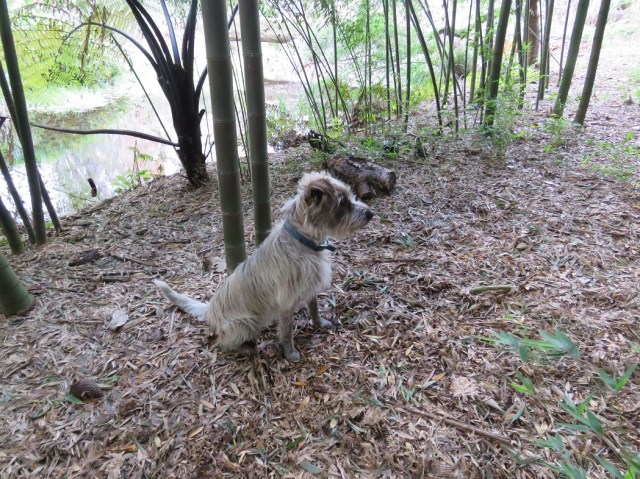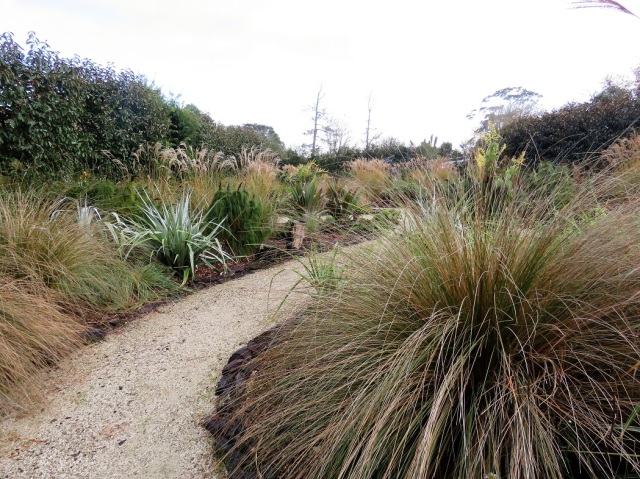
I do not subscribe to the notion of no maintenance gardening. There is low maintenance gardening, lower, lowish, high and very high maintenance gardening. The grasses are generally on the lower side of the spectrum.
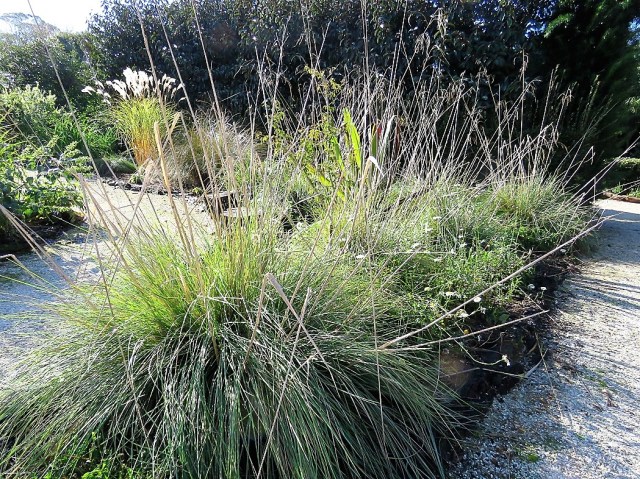
I certainly don’t groom ornamental grasses in wilder, more naturalistic settings but the Court Garden requires some quite precise maintenance to keep its looks, although it is not usually onerous. This train of thought came about because I have been grooming the Stipa gigantea and that has been more major than I anticipated. At least I have worked out that every established clump is putting up maybe 40 flower spikes which is a lot, really. But there are 24 large plants of it in that garden (yes, I counted!) and every one takes up to an hour for a thorough dead heading and grooming out the dead leaves with a few also needing to be reduced in size. It is not such low maintenance and it is entirely optional but the plants do look tidier for it.
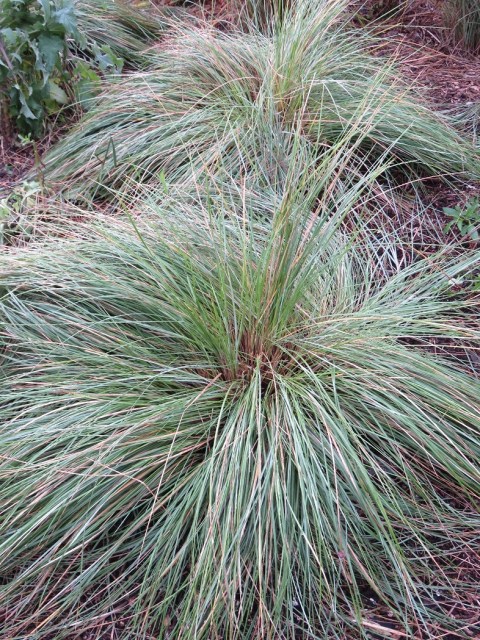
The lowest maintenance option are the deciduous grasses that just get cut down to the ground. That is Miscanthus sinensis ‘Morning Light’. We also cut down Calamagrostis ‘Karl Foerster’ and ‘Overdam’ which are not deciduous but look pretty scruffy and of no merit by late autumn. We have plenty of other evergreen plant material in that garden that gives winter interest and, when cut down, the calamagrostis return with pristine fresh foliage in spring.

If you have a very sharp spade and sufficient strength, it is possible to reduce the size of the clumps when they are cut down without having to lift the plants and disturb the roots. I have our Zach with a sharp spade to do this very job, as he has done on the calamagrostis last week and will do on and miscanthus that are looking too large when we cut those down soon.
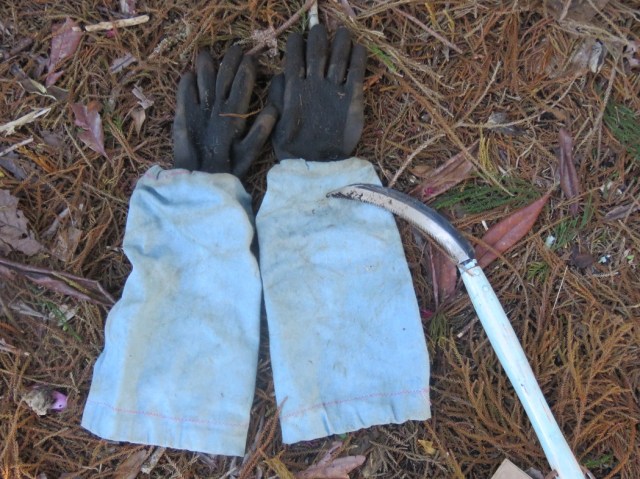
For cutting down grasses or perennials, buy yourself one of these very handy little tools with serrated teeth and a curved blade. I think I bought my latest one described as a ‘flax cutter’.
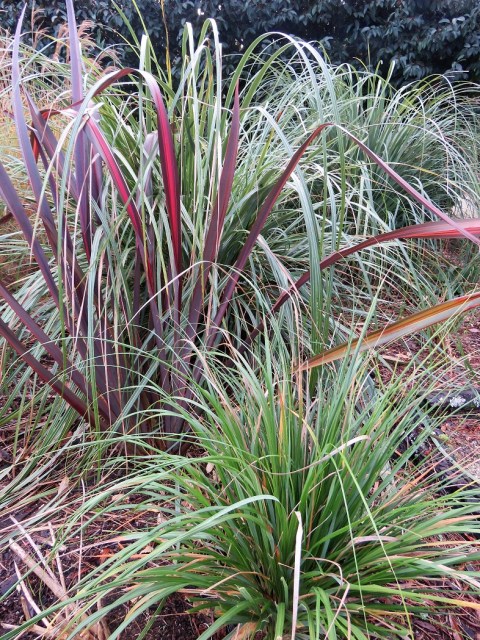
Our native Chionochloa flavicans (dwarf toe toe) has a reputation for ‘whiffing off’, as Mark is wont to say. In other words, it grows beautifully for a few years and then starts dying out. I feel that the proper toetoe we grow – Austroderia fulvida – is showing signs of the same trait and I put it down to a build-up of detritus and dead foliage in the middle of the plants. In the wild, it will be part of the natural cycle; in the garden, we don’t want to cope with half dead plants needing replacement. My theory is that if I keep the plants cleaned out, they won’t suffer that fate. Ask me in five years’ time if I am right on that. I cleaned the plants up in summer, after flowering. The chionochloa were fine to do and did look better for it. The mature toetoe were not much fun to groom because, like a number of our native grasses, they are a form of cutty grass and cut they do. I always wear gloves and I also covered my arms but my ears, my ears! Those very long leaves can cut ears readily. At least it is only a once-a-year job.

The Stipa gigantea does not cut flesh and is probably fine to be left without intensive grooming. I have never done it this thoroughly before so maybe it is overkill or maybe just something to do every few years. You can take the Monty Don of BBC ‘Gardener’s World’ approach and just use your hands as a comb to pull out the dead leaves. He doesn’t even wear gloves that I have seen so I guess they don’t have cutty grasses. I have used the metal leaf rake before and that does a pretty good job when you have room to move around the plants. This time I got in for a thorough clean using our useful little hand rake that you won’t be able to buy at the garden centre. Mark tells me it once belonged to his father but that he replaced the broken handle with a beautifully whittled, sanded and oiled handle that is longer than the original. Not only is this a useful implement for getting in to plants, it is also very nice to handle.


A few of the grasses don’t need much attention at all – notably our native Chionochloa rubra (red tussock) and Anemanthele lessoniana (gossamer grass). They may need digging and dividing every few years to reduce their size in a garden situation, but they don’t need routine maintenance, bar weeding out the many self-sown seedlings of anemanthele. It is the only prolific seeder we are using in the Court Garden. The miscanthus throws a few seedlings; the stipa is sterile; the others I have yet to find seedlings of (a thick mulch discourages seed germination) but the anemanthele… It is just as well it is both native and has merit because it certainly seeds down.
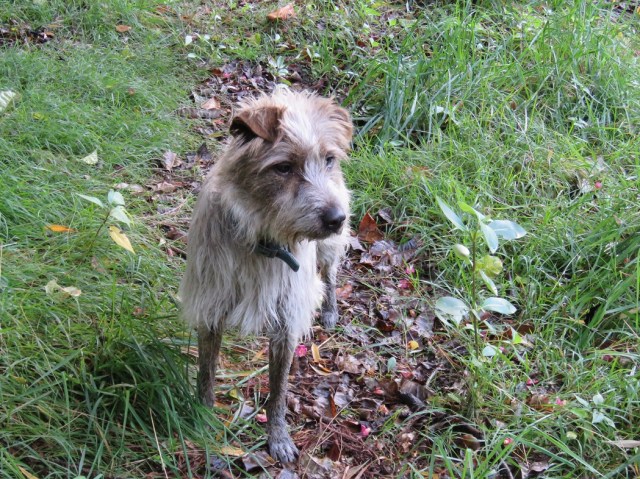
Finally, may I introduce Ralph? Ralph came to us from the city pound. He is a little larger than our usual grade of dog but he has settled in here instantly with no doubt that this is his home. Life is terribly exciting for Ralph with so many interesting smells. He is constantly on the move outside and most of my photos end up being a passing blur. But he makes us laugh and it seems that everybody loves a scruffy dog. Come the evening, tired Ralph decides he is now a lap dog and that can be a bit challenging with one his size. Engaging but challenging.
